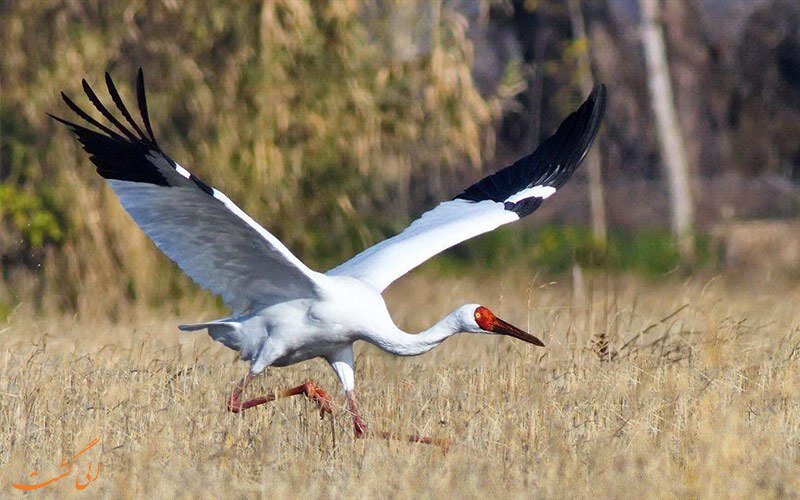Hope raises for ‘Omid’ survival

TEHRAN – The Cracid & Crane Breeding and Conservation Center (CBCC) in Belgium has introduced a young female Siberian crane as the best candidate for companionship with ‘Omid’, the last survivor of the Siberian crane.
After losing his couple Arezoo (meaning Wish in Persian), ‘Omid’ (meaning Hope in Persian) comes every year to the Fereydunknar International Wetland for wintering.
Siberian cranes are monogamous birds, and if the female mate dies for some reason, the male will be left alone forever.
Omid's annual migration to Iran is very important and attracts many birdwatchers, considering that it is the last survivor of the western Siberian cranes.Omid's annual trip to Mazandaran is very important for environmental and wildlife lovers and attracts many birdwatchers, considering that it is the last survivor of the western Siberian cranes.
He did not come to Mazandaran for wintering in 2009 and 2015, which caused the concern of environmentalists.
Recently, a young female Siberian crane called ‘Sibe’, who is the best candidate to accompany Omid has been introduced by the Cracid & Crane Breeding and Conservation Center (CBCC) in Belgium. With the cooperation of Iran's department of environment, the necessary measures were taken for Sibe to come to Iran, Keramat Hafezi, a member of the Iran Bird Registration Committee said.
A special cage will be placed near Omid’s habitat so that the release can be done slowly and gradually after observing the possible desire of the two birds, he explained.
One of the characteristics of Sibe is that she was raised by parents and had the least contact with humans so that she will not have difficulties in wildlife, he noted.
According to the experts, the only practical action to save Omid is the aforementioned action.
Efforts have been made many times to save the population of the Western Siberian Crane in Iran and these actions were carried out under the supervision of the International Crane Foundation, Hafezi stated.
Some 12 cranes were sent to Iran from the Russian breeding center of Oka with the coordination of ICF; some of which did not migrate, and some did, and even one of them migrated to the western shores of the Caspian Sea, he added.
Critically endangered cranes
According to the International Crane Foundation website, this critically endangered species is now only found in one main population in East Asia, with a few birds remaining in the historic Western/Central population.
The Eastern population breeds in northeastern Siberia and winters at Poyang Lake in the Lower Yangtze River Basin in China. In the Western/Central population, a single crane [Omid] continues to winter along the south coast of the Caspian Sea in Iran. This population is bred just south of the Ob River in Russia.
With a height of 140 centimeters and a weight of 6 kilograms, there are only 3,600 to 4,000 cranes left in the world. The Eastern population is stable, but the Western/Central population is almost extirpated.
Adult cranes have red skin on the forehead, face, and sides of the head, white plumage with black wingtips, and reddish-pink legs while juvenile cranes have a plumage mix of white and cinnamon-brown feathers and tan head.
The oldest documented crane was a Siberian Crane named Wolf, who died at the age of 83. Wolf is in the Guinness Book of World Records.
Habitat loss, especially due to changing hydrology caused by water diversions and conversion of wetlands, illegal take including hunting, trapping and poisoning, pollution, and environmental contamination is threatening this endangered species.
FB/MG
Leave a Comment